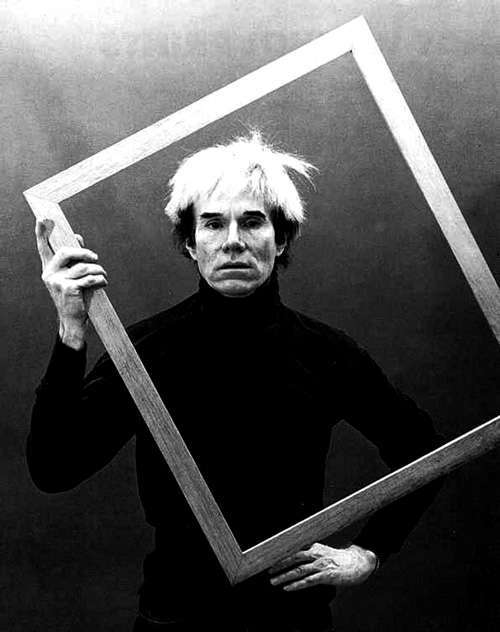 In 2006, the International Herald Tribune published an article that examines 20 years of the Andy Warhol brand. The author of the article commented, “To judge by all the merchandise, Warhol is being positioned as the next Hello Kitty.” Today, seven years later, the comment still rings true.
In 2006, the International Herald Tribune published an article that examines 20 years of the Andy Warhol brand. The author of the article commented, “To judge by all the merchandise, Warhol is being positioned as the next Hello Kitty.” Today, seven years later, the comment still rings true.
No doubt, Warhol would have loved the Internet Era, a time when everyone really can have their “fifteen minutes of fame” (and much more). As a master of branding and commercialization, Warhol was of the persuasion that “Being good in business is the most fascinating kind of art.”
Let’s take a look at 3 ways you can practice this fascinating Warholian art of boosting your company’s brand.
Small Business Tactic #1: Be the Bellwether
I really like the word ‘bellwether’: one who takes the lead or initiative. It perfectly describes Andy Warhol as a key figure in the ‘60s, ‘70s, and ‘80s. I was particularly impressed by the word’s impact when I found it in an article from The Economist, which refers to the Warhol market as “the bellwether of post-war and contemporary art.”
The article was referring in particular to a Warhol painting (“Eight Elvises”) that sold for an astonishing $100m+ in 2008. In 2009, another one of his works, “200 One Dollar Bills,” was auctioned off for $43.8m. Warhol is/was the ‘bellwether’, indeed!
The best part is, consumers don’t have to have Christie’s or Sotheby’s kind of money to own a little piece of Warhol either. Walk into Target and pick up a mug or t-shirt. Visit just about any online poster website, and you’re sure to snag a bargain reprint right off the home page. More than two decades after his death, Andy Warhol is still a master of brand extension, which is exactly why he’s the bellwether of the contemporary art market, a market that’s overly self-aware of its own commercialization.
The lesson: Good brands sell stories, an ethos – not products. Though Warhol had the occasional work of art sell for millions of dollars, the majority of his (post-death) revenues don’t come from the auctioning of originals. The revenues come from licensing and small consumer goods that carry that inimitable “Warhol Ethos.” Build your brand’s ethos; be the bellwether.
Small Business Tactic #2: Market with Transparency
Go back to the article I mentioned at the beginning of this blog post, and you’ll see this ingenious little ad Warhol posted in The Village Voice in 1968:
“I’ll endorse with my name any of the following: clothing, AC-DC, cigarettes, small tapes, sound equipment, ROCK ‘N’ ROLL RECORDS, anything, film and film equipment, Food, Helium, Whips, MONEY!! love and kisses ANDY WARHOL. EL 5-9941.”
Now, we can’t all get away with that kind of marketing! But chances are we could all benefit from pulling back the curtains just a little bit. Whether you believe him or not, Warhol marketed himself as highly transparent. He famously said, “If you want to know all about Andy Warhol, just look at the surface of my paintings and films and me, and there I am. There’s nothing behind it.”
The lesson: Explore ways that your brand can let people in on what it is you do, how you do it, why you do it, etc. This is a fundamental part of content marketing. You can start implementing this small business tactic this week with a blog, social media profile, or video (just to throw out some basic ideas for getting started).
Small Business Tactic #3: Generate Ideas & Find Help in Execution
People were screen-printing long before Andy Warhol came along. If we can trust Wikipedia, it looks as though screen-printing got its start about one millennium before Warhol in China. However, Warhol is inarguably the catalyst that popularized the art form. But more important than his “rediscovery” of screen-printing is his decision to utilize it for brand extension.
Instead of laboring over the tools and machines for 14 hours a day, Andy Warhol came up with the ideas, executed them a few times himself, and then had other people do the intensive labor for him. As a result, he was able to perfect the art of brand extension.
The lesson: As the business owner, you are the idea generator. Trust in your employees to take your ideas and run with them. This is an essential small business tactic for anyone who wants to truly grow a company. Don’t believe the lie that having other people do the “heavy lifting” for you will cost your brand it’s reputation. Being the idea generator and implementing marketing automation tactics are just two of many ways you can “mass produce” while still maintaining a brand experience.
What’s your take on Warholian branding and marketing? How will your company be the bellwether in your field?